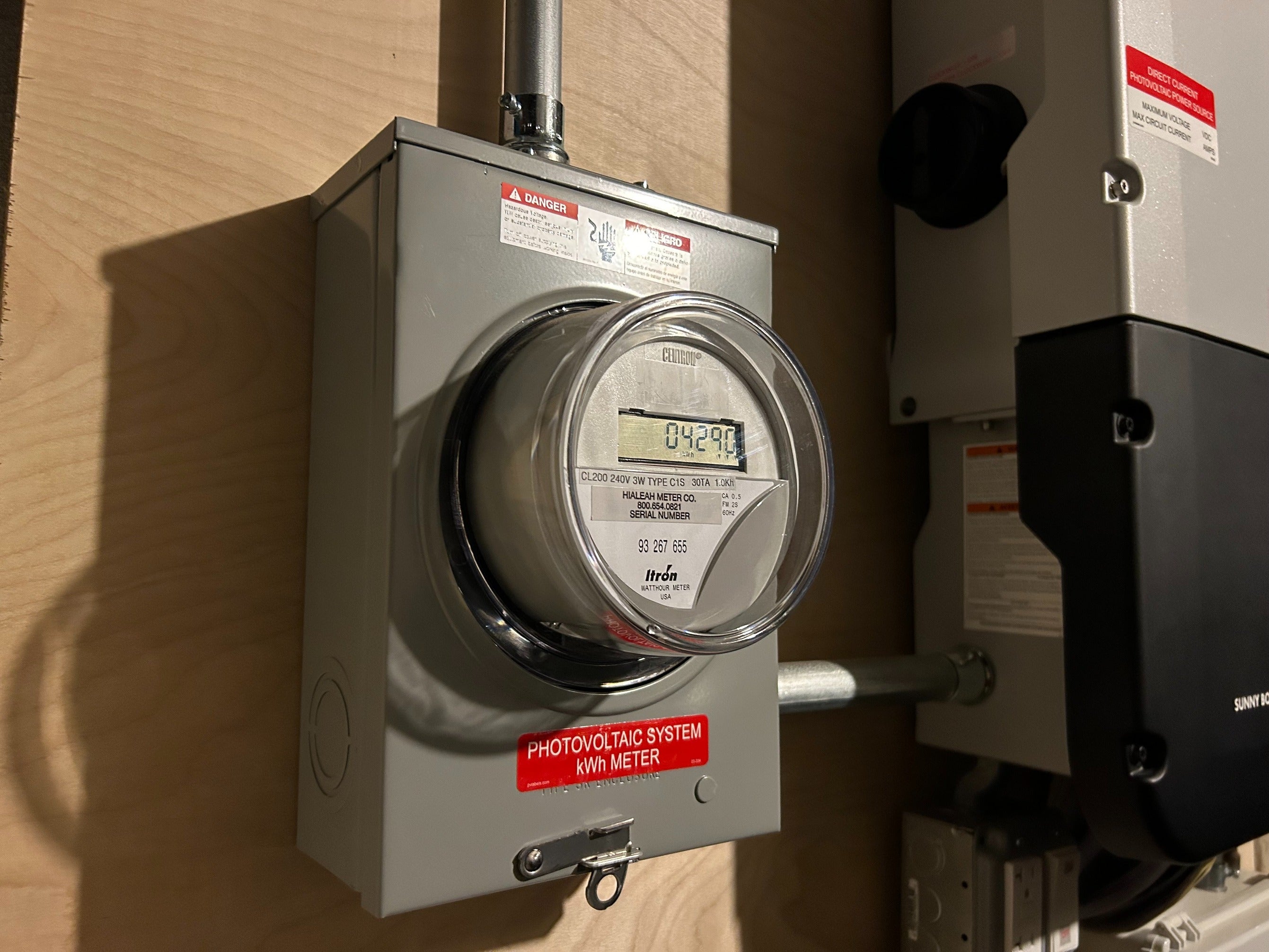Report on a Novel Electrolyte for Enhanced Lithium-Ion Battery Safety and Sustainability
A recent technological advancement in lithium-ion battery composition presents a significant opportunity to mitigate fire risks associated with their use in consumer electronics and electric vehicles. Research conducted at the Chinese University of Hong Kong has resulted in a modified electrolyte that prevents thermal runaway. This innovation aligns directly with several United Nations Sustainable Development Goals (SDGs) by promoting safer, more durable, and reliable clean energy technologies.
Technological Advancement in Battery Design
The Challenge of Thermal Runaway in Conventional Batteries
Standard lithium-ion batteries consist of a graphite electrode, a metal oxide electrode, and a liquid electrolyte. A critical safety issue is thermal runaway, a process where a short circuit, caused by puncture or damage, leads to a rapid and uncontrolled release of stored chemical energy. This reaction is driven by the breaking of anion bonds, which releases significant heat, creating a self-sustaining cycle that can result in fire or explosion.
An Innovative Electrolyte Solution
The research team, led by Yue Sun, has developed a new electrolyte that effectively neutralizes the risk of thermal runaway. The solution involves the introduction of a second solvent, lithium bis(fluorosulfonyl)imide, into the electrolyte. This material is engineered to bond with lithium ions specifically at elevated temperatures characteristic of the onset of thermal runaway. This action prevents the anion bonds from breaking, thereby halting the heat-generating cycle.
- Safety Improvement: In nail penetration tests, the temperature of the modified battery increased by only 3.5°C, whereas conventional batteries can exceed 500°C under similar conditions.
- Mechanism: The new solvent isolates the anions during high-stress events, preventing the chain reaction that leads to thermal runaway.
- Manufacturing Compatibility: The design can be integrated into existing battery manufacturing processes, facilitating a smoother transition to mass production.
Performance Metrics and Commercial Feasibility
Durability and Performance
Testing demonstrated that the new battery design is not only safer but also commercially viable in terms of performance. The batteries retained 82% of their original capacity after 4100 hours of continuous use, a figure that is competitive with current industry standards for longevity and reliability.
Path to Mass Production
According to expert analysis, the findings represent a significant leap in battery safety. The technology is considered mature enough for integration into the next generation of batteries, with a projected timeline for mass production estimated at three to five years.
Contribution to United Nations Sustainable Development Goals (SDGs)
This innovation provides substantial support for the achievement of multiple SDGs:
-
SDG 7: Affordable and Clean Energy
By enhancing the safety and reliability of batteries, this technology accelerates the adoption of renewable energy storage systems and electric vehicles, which are fundamental to a global transition to clean energy.
-
SDG 9: Industry, Innovation, and Infrastructure
The development of a safer electrolyte is a critical industrial innovation. It strengthens the resilience and safety of infrastructure related to clean energy and sustainable transport, fostering technological progress.
-
SDG 11: Sustainable Cities and Communities
The widespread use of these safer batteries in electric cars, buses, and personal devices will reduce fire risks in urban environments, contributing to the development of safer and more sustainable cities.
-
SDG 12: Responsible Consumption and Production
The enhanced durability of the battery, demonstrated by its high capacity retention, promotes longer product lifecycles. This contributes to more sustainable consumption patterns by reducing electronic waste and the need for frequent replacements.
-
SDG 13: Climate Action
By removing a significant safety barrier to the mass adoption of electric vehicles and energy storage solutions, this innovation directly supports global efforts to reduce greenhouse gas emissions and combat climate change.
Analysis of Sustainable Development Goals (SDGs) in the Article
1. Which SDGs are addressed or connected to the issues highlighted in the article?
The article on developing safer lithium-ion batteries connects to several Sustainable Development Goals (SDGs) by addressing challenges in technology, energy, industry, and safety. The primary SDGs identified are:
- SDG 7: Affordable and Clean Energy: The development of safer and more reliable batteries is crucial for the widespread adoption of clean energy technologies. This includes storing energy from renewable sources and powering electric vehicles, which are central to transitioning away from fossil fuels.
- SDG 9: Industry, Innovation, and Infrastructure: The article is centered on a technological innovation—a new battery electrolyte—that enhances an existing industrial product. It discusses scientific research, upgrading technological capabilities, and the potential for mass production, which are core components of this goal.
- SDG 11: Sustainable Cities and Communities: By making batteries for electric cars safer, this innovation contributes to the development of safer and more sustainable transportation systems, a key aspect of creating sustainable cities.
- SDG 12: Responsible Consumption and Production: The creation of a battery that does not erupt in “uncontrollable fires” represents a move towards safer product design and more responsible production patterns. It minimizes the risk of hazardous events and the release of harmful substances during the product’s use.
2. What specific targets under those SDGs can be identified based on the article’s content?
Based on the article’s focus on technological advancement and its applications, the following specific SDG targets can be identified:
- Target 7.2: By 2030, increase substantially the share of renewable energy in the global energy mix.
- Explanation: The article discusses batteries for electric cars and energy storage. Safer, more stable, and long-lasting batteries are essential for storing intermittent renewable energy (like solar and wind) and for making electric vehicles a more viable alternative to gasoline cars, thereby helping to increase the share of clean energy.
- Target 9.4: By 2030, upgrade infrastructure and retrofit industries to make them sustainable…and greater adoption of clean and environmentally sound technologies and processes.
- Explanation: The new battery design is described as a “safer” technology that can be built “exactly like existing batteries.” This implies it can be integrated into current manufacturing processes, representing an upgrade to the industry to produce a more environmentally sound and safer product by preventing hazardous fires.
- Target 9.5: Enhance scientific research, upgrade the technological capabilities of industrial sectors…encouraging innovation.
- Explanation: The entire article details a scientific breakthrough (“researchers created a second solvent”) that represents a “big leap in terms of battery safety.” The mention of it being ready for mass production in “three to five years” directly points to the process of moving from research and innovation to industrial application.
- Target 11.2: By 2030, provide access to safe, affordable, accessible and sustainable transport systems for all.
- Explanation: The article explicitly mentions that lithium-ion batteries are used in “electric cars.” By preventing fires when batteries are “pierced or bent,” this innovation directly addresses the safety aspect of electric vehicles, which are a cornerstone of sustainable transport systems.
- Target 12.4: By 2020, achieve the environmentally sound management of chemicals and all wastes throughout their life cycle…and significantly reduce their release to air, water and soil in order to minimize their adverse impacts on human health and the environment.
- Explanation: The article describes how the new design prevents “thermal runaway,” a process that can cause fires or explosions. Preventing such events is a form of environmentally sound management, as it stops the uncontrolled release of chemicals and toxic fumes from burning batteries, thus minimizing adverse impacts on health and the environment.
3. Are there any indicators mentioned or implied in the article that can be used to measure progress towards the identified targets?
Yes, the article contains specific, measurable data points that can serve as indicators of progress towards the identified targets.
- Indicator for Safety Improvement (Targets 11.2, 12.4): The article provides a direct quantitative comparison of safety.
- Specific Data: “When pierced with a nail, the temperature inside the battery rose by only 3.5°C, while conventional batteries can heat up by more than 500°C.” This drastic reduction in temperature increase during a failure event is a clear indicator of enhanced safety.
- Indicator for Performance and Durability (Targets 7.2, 9.4): The article mentions the battery’s longevity, which is a key performance metric for its practical application in energy storage and electric vehicles.
- Specific Data: “The batteries using the new solvent retained 82 per cent of their capacity over 4100 hours of use.” This indicates that the new design is not only safer but also durable enough to “compete with current technology.”
- Indicator for Technological Readiness and Adoption (Target 9.5): The article provides a timeline for industrial adoption, which implies a high level of technological readiness.
- Specific Data: The expert opinion that the technology could be “mass-produced in three to five years” serves as an indicator of its potential for rapid integration into industrial sectors, measuring the successful transition from research to market.
4. Summary Table of SDGs, Targets, and Indicators
| SDGs | Targets | Indicators |
|---|---|---|
| SDG 7: Affordable and Clean Energy | 7.2: Increase substantially the share of renewable energy in the global energy mix. | Battery performance and durability: “retained 82 per cent of their capacity over 4100 hours of use.” |
| SDG 9: Industry, Innovation, and Infrastructure | 9.4: Upgrade infrastructure and retrofit industries to make them sustainable…with…greater adoption of clean and environmentally sound technologies. | Development of a safer battery technology that prevents thermal runaway and can be integrated into existing manufacturing. |
| 9.5: Enhance scientific research, upgrade the technological capabilities of industrial sectors…encouraging innovation. | Timeline for industrial adoption: Technology can be “mass-produced in three to five years.” | |
| SDG 11: Sustainable Cities and Communities | 11.2: Provide access to safe, affordable, accessible and sustainable transport systems for all. | Improved safety metric for electric vehicle batteries: Temperature rise of only 3.5°C upon puncture, compared to over 500°C in conventional batteries. |
| SDG 12: Responsible Consumption and Production | 12.4: Achieve the environmentally sound management of chemicals…to minimize their adverse impacts on human health and the environment. | Prevention of “uncontrollable fires” and “thermal runaway,” which reduces the uncontrolled release of hazardous chemicals. |
Source: newscientist.com






